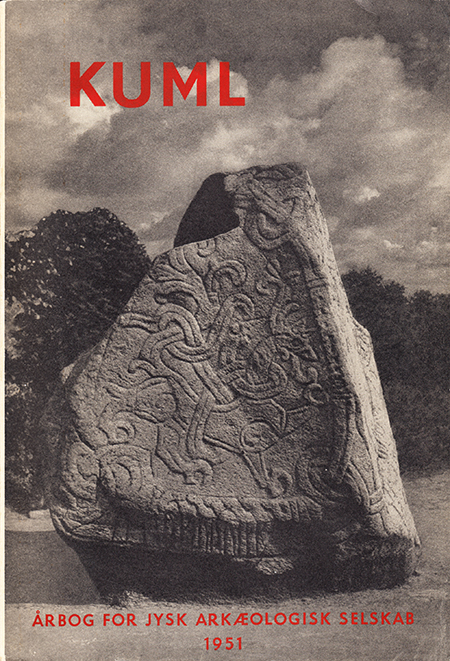Det femte store mosefund
DOI:
https://doi.org/10.7146/kuml.v1i1.24752Nøgleord:
Mosefund, Illerup, ÅdalResumé
A votive offering of weapons in lllerup river valley
In the course of digging drainage ditches in May 1950 in the peat of the lllerup river valley near Skanderborg (southwest of Aarhus) the discovery was made of a large votive offering of the same type as the big discoveries -dating from the Late Roman and Germanic periods - which were excavated in the years 1858-65 at Thorsbjerg and Nydam in South Jutland and Viemose and Kragehul in Funen. A thorough-going investigation has been commenced but is still far from completed.
The offering consists of a very large quantity of twisted and destroyed weapons scattered over a considerable area in the bog. At the time when these weapons were deposited the bog was half overgrown, with a deep hole, with open water lying at the exact location of the offering. A sill of decomposing vegetation extended from the edge of this hole some way out over its surface.
Like the other bog discoveries of this nature the Illerup-valley find must be interpreted as an offering of spoils of war to the god of war (cf. the accounts of such offerings given by Julius Caesar and Paulus Orosius). The battle which in this case provided the reason for the offering appears, to judge by the number of weapons, to have been of considerable magnitude. It did not take place in the bogland; the layer of moraine clay found inside some of the shield bosses shows that it must have occurred at a higher level on dry land. Clearly the objects found lay on the battlefield for some time after the battle, and, before being deposited in the bog, were burnt. This certainly accounts for the almost total absence from the find of objects of wood. In addition the weapons were, as mentioned above, rendered useless by twisting and by hacking the cutting edges. Thereafter they were taken out into the bog, where some were laid on the "dry land" of the sill, and others thrown into the water.
The objects occurring most frequently are swords, shield bosses, lance points, and spear and arrow heads. The sword-type is the "spatha", long and two-edged, many being damascened. Among the less commonly found objects may be named battle-axes, various types of weapon mountings, buckles and a single fibula. Although, as mentioned, wood is almost entirely absent an arrow shaft has been found, as well as a boat formed of a hollowed oak trunk.
In number of objects found the Illerup discovery already bears comparison with the smallest of the four big discoveries, that at Kragehul. It shows a smaller variety of types than its great predecessors and moreover differs from them in the savage way in which the destruction of the weapons has here been carried out. The date of the offering is not yet definitely fixed but it would appear to be about 400 AD.
It is almost a century since the four great weapon deposits were excavated and neither drawings nor photographs were made on those occasions. It is therefore of very great interest that the opportunity is now afforded to investigate a corresponding discovery in accordance with modern excavating technique.
Mine detectors have been used, and have succeeded in establishing that another area containing metal objects lies a little to the west of that to which excavations have hitherto been confined. We look forward with great interest to the investigation of this new area.
Harald Andersen
Downloads
Publiceret
Citation/Eksport
Nummer
Sektion
Licens
Fra og med årgang 2022 er artikler udgivet i Kuml med en licens fra Creative Commons (CC BY-NC-SA 4.0).
Alle tidligere årgange af tidsskriftet er ikke udgivet med en licens fra Creative Commons.


